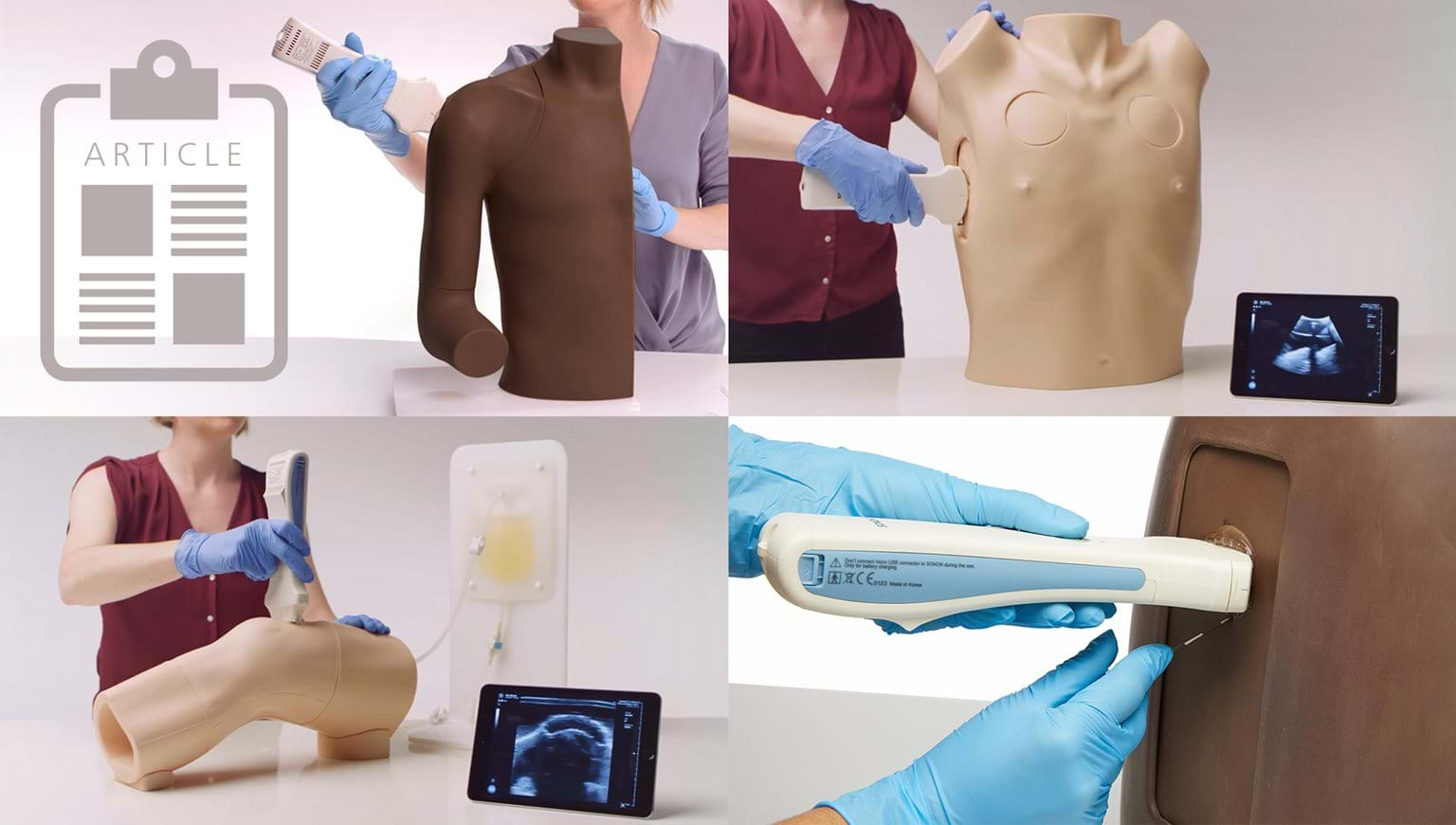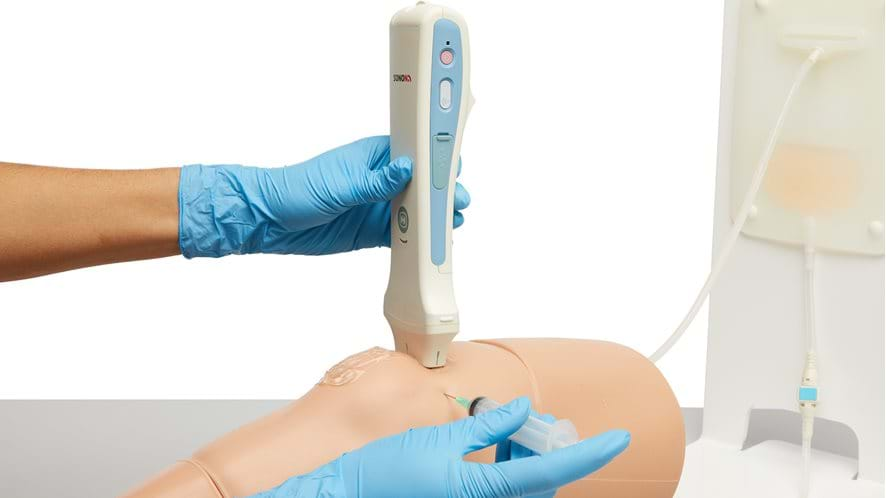News
The Use of Ultrasound in Clinical Simulations
17 June 2021
Healthcare has evolved tremendously over the past 20 years. One of the main reasons for this advancement is the development of technologies that improve the ability to correctly diagnose and treat patients.

The growth of ultrasound aided by improved technology is an outstanding medical advancement in recent history, now being used by “nearly every medical specialty”.1 In fact, the latest developments allow clinicians to utilize Point of Care Ultrasound (PoCUS) at the patient’s bedside with a probe attached to their own smart phone. This additional tool has already and will continue to change not only how patients are examined, diagnosed, and treated, but also how and what we teach the clinicians of the future.
Globally, healthcare simulation continues to grow and become accepted to master needed skills in a safe environment. However, despite these growing trends, graduate medical education has not yet been able to build an international curriculum that ensures standardized care despite location or resource availability. A recent study, focusing on building a solid infrastructure for graduate medical trainees around the world, recommends that “a portion of their protected education time should be tailored to address special topics related to global health across the duration of their training program”.2 One example of this recommends adding “critical clinical knowledge traditionally absent in standard medical training" and suggests “point of care ultrasound simulations for education on diagnosing certain disease processes such as cholecystitis, hydronephrosis, congestive heart failure, or pulmonary consolidations”.2

Many scientists now believe that beginning ultrasound training in Graduate medical education is not soon enough. In 2016, The European Federation of Societies for Ultrasound in Medicine and Biology (EFSUMB) officially recommended that ultrasound “be used systematically as an easily accessible and instructive educational tool in the curriculum of modern medical schools”.3 Their statement goes on to say that “technological progress has opened new perspectives to ultrasound (US) clinical applications. Accordingly, education and subsequently preparation and updating of US knowledge become crucial”.3 Pockets of undergraduate PoCUS education have been included since the mid 2000’s in the United States, but a recent study shows that 73% of undergraduate medical schools now include a mandatory ultrasound curriculum, and more than 78% of all programs have a dedicated ultrasound machine.1
It is important to note that the use of ultrasound in healthcare is not specific to physicians. A 2020 study states that “In Australia and internationally RNs and NPs are using Point of Care Ultrasound (PoCUS) in many clinical circumstances and in varying clinical applications with differing education, practical instruction and competencies”.4 After thorough literature review of nurses’ use of PoCUS, “The studies show RNs and NPs require education in PoCUS with a preference to undertake accredited courses including theory and practical components. Education with theory and practical components is essential to perform PoCUS, as is the ability to read, interpret, discuss and report images to maintain high standards and ensure patient safety”.4
Opportunities for education expand beyond undergraduate and graduate education. “An essential adjunct to PoCUS training is establishing opportunities for continuing medical education (CME); technical skill and clinical integration are vital to sustaining PoCUS competency”5.
So, the literature overwhelmingly recommends the need for education related to the growing use of PoCUS. A study specific to ultrasound being taught in the simulation environment states that “learners who spent time on a simulator where they could repeat tasks without the clinical pressures of scanning at the bedside responded positively to this approach. Clinical scenarios with live models, phantoms, and simulator manikins with abnormal pathology can significantly augment the learners' PoCUS education”.5 Despite this positive outcome, “there are no standardized guidelines for simulation PoCUS training”5. As a simulation community, we need to continue to strive for models, scenarios, and simulation access for clinicians around the world to obtain and maintain these valuable skills that will provide better and safer care to our patients.
For more information about our Ultrasound Range, please contact our team.
References:
1. The Current Status of Ultrasound Education in United States Medical Schools
2. 12 Tips on enhancing global health education in graduate medical training programs
3. EFSUMB Statement on Medical Student Education in Ultrasound
4. Point of care ultrasound by Registered Nurses and Nurse Practitioners in clinical practice: An integrative review
5. Techniques and Strategies in Ultrasound Simulation


